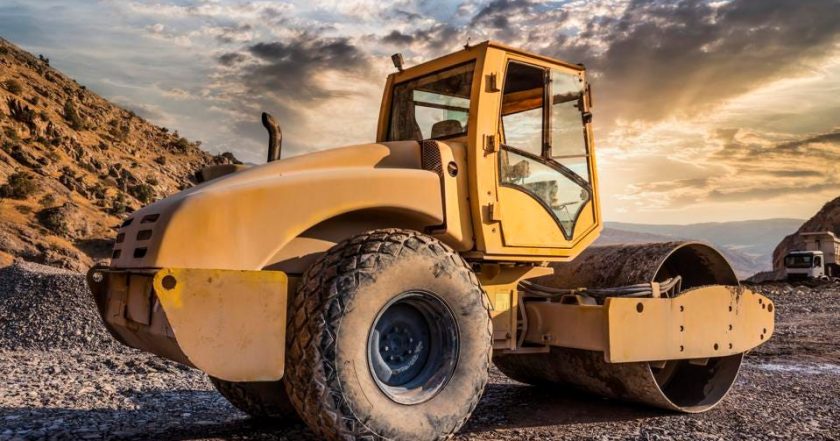Heavy equipment transport requires careful planning because you must consider local laws, suitable vehicles, and safe routes. Proper planning will ensure your machinery is delivered without issues, while poor planning can lead to fines, unsafe driving conditions, or damaged equipment.
Therefore, it is crucial to plan how to transport heavy equipment in compliance with state rules to avoid fines and accidents. This includes services like farm tractor hauling, excavator and commercial truck shipping, and other heavy equipment transportation.
Whether driving a long distance or just around the block, properly loading and securing your equipment will safeguard both your transport and the road. Follow these tips for heavy equipment transport to move your machinery safely and effectively.
Use the Right Vehicle and Trailer
For heavy equipment transport, it is crucial to pick the right trailer for the job. Three different trailers can be used for this case.
- A big rick truck has an enclosed trailer typically used to move engines, forklifts, UTVs, and other heavy equipment.
- The lowboy trailer is the best option for moving heavy equipment, such as backhoes, excavators, and bulldozers. Learn more about Moving a Bulldozer.
- A flatbed truck transports heavy loads that need to be weather-proof. The truck has two deck levels, the upper level being 11 feet long and the lower level being 37 feet long. Read about Pros and Cons of Flatbed Trucking.
Properly Secure the Load
Failure to properly secure a cargo might result in the object falling off the trailer, causing an accident or even death. So, you must confirm the load is not moving in any direction and is firmly connected to the trailer.
Heavy equipment transport requires checking the connection points and securing equipment beforehand. You should also ensure all ties are in good condition and the hooks are usable. The tie-downs should be able to hold more than the weight of the equipment or meet the equipment weight rating.
Hire Trained Drivers
Engaging professional drivers in heavy equipment transport processes is a must. The driver must understand how to carry large and bulky goods safely, drive heavy-duty vehicles professionally, and know all road safety requirements.
Drivers should also clearly know the best methods for transporting dangerous tools. In addition, they must understand how to move heavy equipment securely, including how to prepare their vehicle for transfer and link various elements of their vehicle together. Heavy equipment transport can be risky, so seek expert assistance when moving anything that could cause harm or death.
Obtain the Required Permits
Heavy machinery requires special supervision when being transported because of the risks involved in doing so. The type of vehicle, number of workers needed to run the machinery, and any other details related to the transport need to be planned out before beginning so that the transport can be handled safely by authorities.
As a matter of fact, laws regulating heavy equipment transport missions exist all over the US. So, authorities must approve and permit heavy equipment moving no matter in what state you are, as it can be hazardous for citizens if not done correctly.
You must deliver the equipment to a designated site, and different permits are required depending on what type of heavy equipment is being moved and where it is going. Furthermore, authorities need to know how many workers will be employed to run the heavy equipment to ensure the transport is run safely.
Research Your Pickup and Drop-Off Locations
Get to know the area you will pick up or drop off the heavy equipment. It will help if you tour the pickup and drop-off location before the transportation process starts to ensure you are comfortable with the available space.
Heavy equipment transport demands caution while moving from one location to another. If it slips or is tipped over, it may cause harm along the road. Using proper techniques when picking up and dropping off the equipment will save both the owner and the driver time and money and ensure that the equipment arrives at the required destination safely.
Hire Heavy Equipment Movers
Heavy equipment transport can be overwhelming no matter how experienced you are; hiring machine movers is an excellent way to move the equipment without stress.
A shipping company will complete your heavy equipment transport professionally and save time and money.
It’s better than moving them yourself using personal tools that may not be sufficient enough to handle such a demanding job. Hiring professionals can also help prevent potential accidents with heavier components, as you wouldn’t be handling any dangerous pieces yourself nor pushing lighter equipment with minimal strength.
Conclusion
Heavy equipment transport is a serious matter that needs careful consideration of methods, roads, and tools. Many risks are associated with the process, but they can be avoided by following the Tips for Heavy Equipment Transport. Remember these tips when planning your next move to make sure the job gets done right from the start!
When selecting a reliable vehicle shipping partner, it is critical to confirm that the company will handle all aspects of the procedure. Tempus Logix has worked hard to be a reliable partner, taking care of all steps of the process for their clients.










